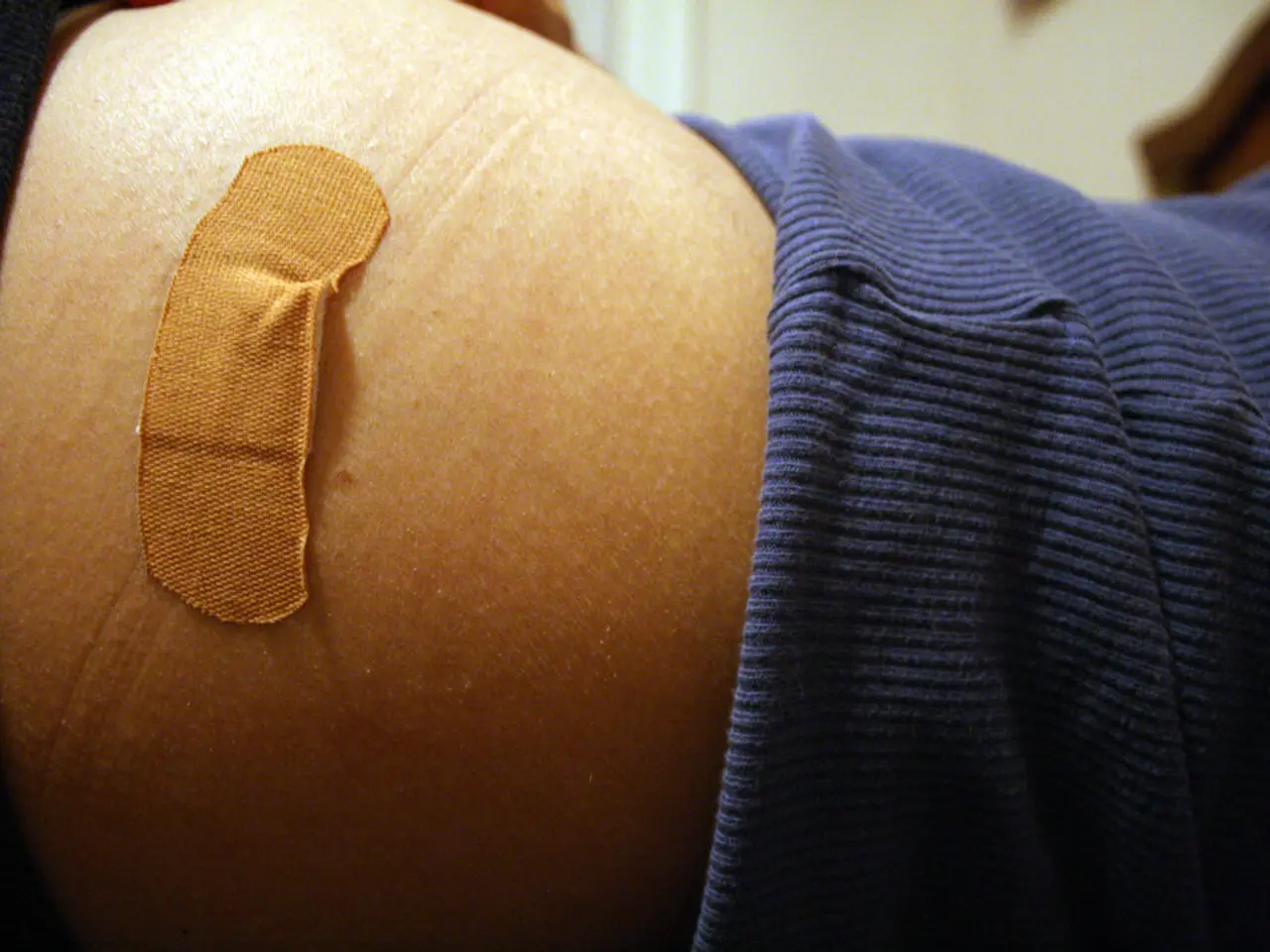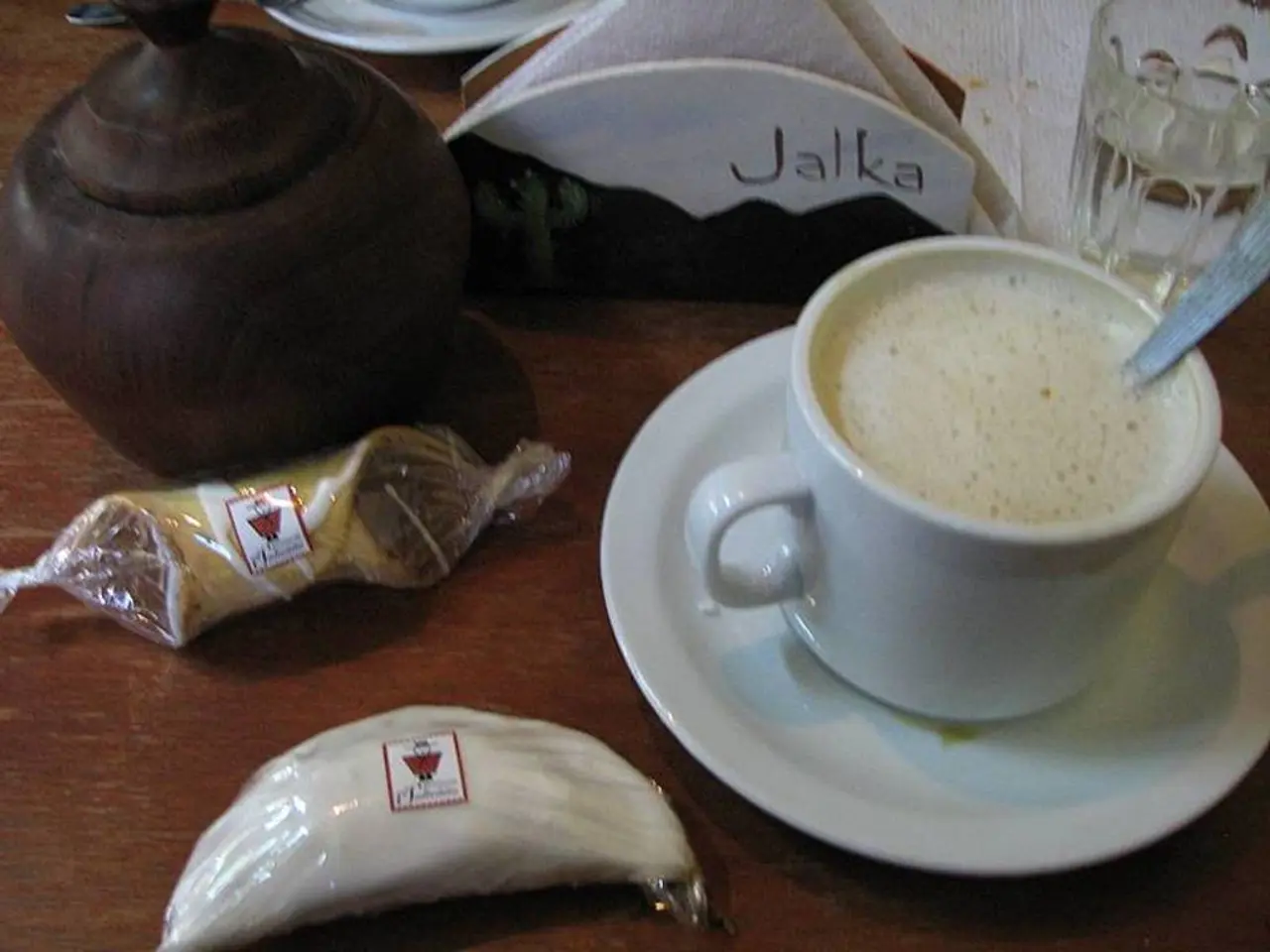Splenic Rupture: Signs, Remedies, and Origins
A ruptured spleen, a laceration or tear in the spleen often caused by trauma or injury, can present with a range of symptoms, treatments, and recovery considerations.
### Symptoms
The most common symptoms of a ruptured spleen include abdominal pain, swelling, or bruising, especially in the left abdomen. Additionally, individuals may experience pain in the left shoulder, which is referred pain due to blood irritating the diaphragm. Other signs of internal bleeding such as weakness, dizziness, or fainting may also be present. In severe cases, symptoms of hypovolemic shock, including low blood pressure and increased pulse rate, may develop. Tenderness upon palpation in the upper left quadrant and possibly rebound tenderness may also be noted [1][3].
### Diagnosis
Diagnosis of a ruptured spleen typically involves a physical examination and symptom assessment by a healthcare provider. Imaging tests, such as X-rays, ultrasound, CT scan, or MRI with contrast, are used to detect spleen tears, bleeding, and internal fluid accumulation. Blood tests to check blood cell levels and liver function may also be conducted. In some cases, diagnostic laparoscopy, a minimally invasive procedure using a camera in the abdomen, is done [1].
### Treatment
Treatment for a ruptured spleen depends on its severity. Conservative management with close monitoring may be possible if bleeding is controlled and the patient is stable. However, emergency surgery such as splenectomy (removal of the spleen) may be necessary if bleeding is severe or uncontrolled. Blood transfusions might be required if there is significant blood loss. In some cases, angiographic interventions (blocking the bleeding artery) might be attempted but may be limited by anatomical factors [3][1].
Following splenectomy, patients are at increased risk for serious infections and thus require daily antibiotics and recommended vaccinations to protect against infections [2][5].
### Recovery
Recovery after a ruptured spleen is repaired or removed can take a few weeks. Patients are typically advised to rest and avoid strenuous or contact sports for 3 to 6 months to prevent re-injury and allow healing. Gentle, low-impact activities such as walking are encouraged during recovery. Gradual resumption of normal activities, including sexual activity, as tolerated, is also recommended. Follow-up care includes monitoring for signs of delayed bleeding, which can occur but is rare after the initial 5 days [2].
In summary, a ruptured spleen presents with abdominal pain and signs of internal bleeding, is diagnosed through imaging and clinical evaluation, treated either conservatively or surgically based on severity, and requires careful recovery to prevent complications including infection [1][2][3].
Obesity can be a risk factor for the development of chronic-diseases such as COPD, as excess body weight can exacerbate breathing difficulties.
With the advent of science and advancements in medical-conditions, predictive models have been developed to identify individuals at high risk of depression, which can co-occur with chronic-kidney-disease and other chronic-diseases.
Therapies and treatments for various health-and-wellness concerns continue to evolve, with a focus on personalized and preventative care, including new techniques for managing co-occurring conditions like bipolar disorder and obesity.
For those who have undergone splenectomy, it's crucial to follow a chronic-disease management plan, such as daily antibiotics and recommended vaccinations, to mitigate the increased risk of infections.
Individuals with chronic-diseases may benefit from understanding the role that maintaining proper AQ (Air Quality) plays in managing their conditions, as poor air quality can exacerbate symptoms.
In cases where chronic-diseases are being managed, it's essential to consider the complexities of treating multiple medical-conditions and seek guidance from healthcare providers for comprehensive care.




